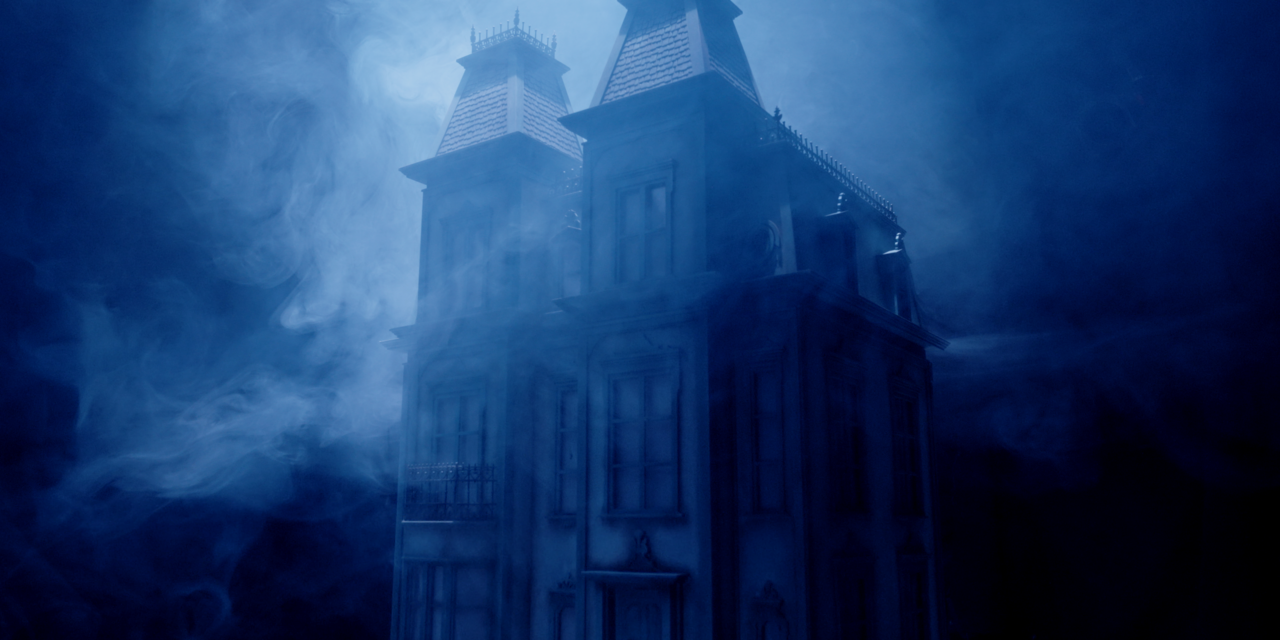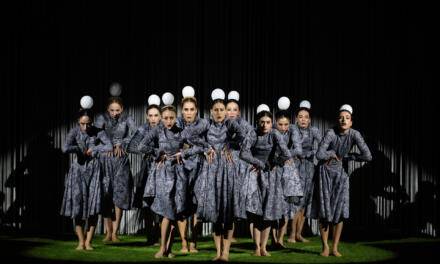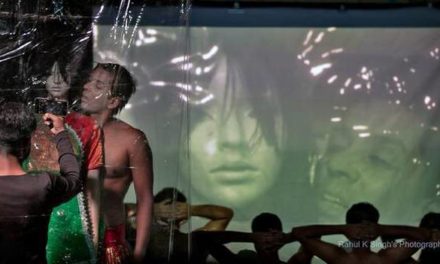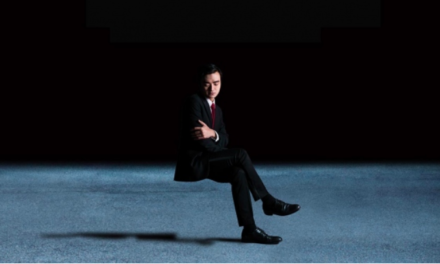Speaking to a class in Rome years ago, I heard Tito Schipa Jr. speak about how opera is simply too big an art form to be reigned into just the stage. He said the first route into truly understanding the art form was just to actively listen to recording with one’s own imagination playing out the action. He said he was planning an animated version of a classic recording of his father and Maria Callas in a production of Tosca because he felt that only through animation could everything encompassed in Puccini’s music be represented; specifically, the characters’ inner world as represented in the orchestra.
Enter the COVID-19 pandemic, and opera companies are more seriously considering this medium. Boston Lyric Opera, which has taken cues from other American companies, started 2020/2021 with live singers in a “mobile opera truck”. They also had to re-think this month’s production, and nobly, have kept artists employed. With Philip Glass’s setting of Edgar Allan Poe’s The Fall of the House of Usher slated for this month, they got innovative. Director James Darrah, has a history of producing music videos and recent filming of Poulenc’s La Voix Humaine, that wasn’t strictly proscenium staging, but more music video, or “cinematic opera”, as he called it. The ambiguity of Poe’s Usher served as a canvas of sorts on which screenwriter Raúl Santos and the art directors could paint. Along with this, they created the character of Luna, an immigrant child held at a U.S. detention center. Singers were safely pre-recorded, with knowledge of the additions to the story, and on January 29th, they launched the event on operabox.tv for streaming.
Cinematic opera seems too broad a term for what this team created. It wasn’t strictly a production of the Philip Glass opera, nor was it a linear film. It was more a mixed media art film. With a combination of originally scripted and filmed live-action, charcoal illustration, film montage, and stop-motion film, this was an incredibly ambitious project, created via remote collaboration. The stop-motion sections were not even strictly that; the opening of that animation revealed the hands that set the fabricated characters in place, adding even another frame to the picture.
William and Roderick watch as an iconic music box couple twirls. PHOTO operabox.tv: Boston Lyric Opera
While it’s hard to imagine that Poe’s Gothic tale of burial alive and an ancestral home sinking into an abyss could be made even darker, BLO was more than up to the task. In fact, one could say based on past seasons, that they’ve been training for years for this, and that the medium of the film truly unleashed much of the frantic psychological pathos they attempt to infuse in nearly all of their productions. I don’t mean to diminish the noble intent and ethical importance of the vision of Luna’s story. Putting aside the potentially tenuous connection between a short story by a 19th-century American man and a contemporary Guatemalan refugee girl, the resulting work was visually stunning and aurally engrossing.
Aiding the adaptation is the fact that Philip Glass’s score contains extended orchestral sections and vocalises that lend themselves to being filled with other visuals. So as Director James Darrah himself noted, the team, and incidentally Glass himself, felt comfortable with the additional storyline since they didn’t touch the dialogue or plot of the actual opera within the film.
From a musical standpoint, David Angus led the orchestra with a driving, haunting imperative. The orchestra and singers were well balanced and diction was precise enough to be understood almost completely throughout, with the exception of one ensemble with overlapping voices, (which would probably have needed the visual of the theatre to even get bits and pieces of individual dialogue). The recording itself was not over-balanced in that there were true changes in dynamic. Unfortunately, the opening of Roderick’s letter being narrated to William sounded tinny and mismatched to the rest of the film’s very seamless sound.
Daniel Belcher, as the protagonist William, (given a name in the opera) sung his dialogue with elegant line and crisp diction. Jesse Darden as the beleaguered Roderick Usher plaintively withered away, punctuated by effective bouts of madness. Chelsea Basler as Madeline Usher sang beautifully and hauntingly. In their very brief turns, supporting characters were excellent as well.
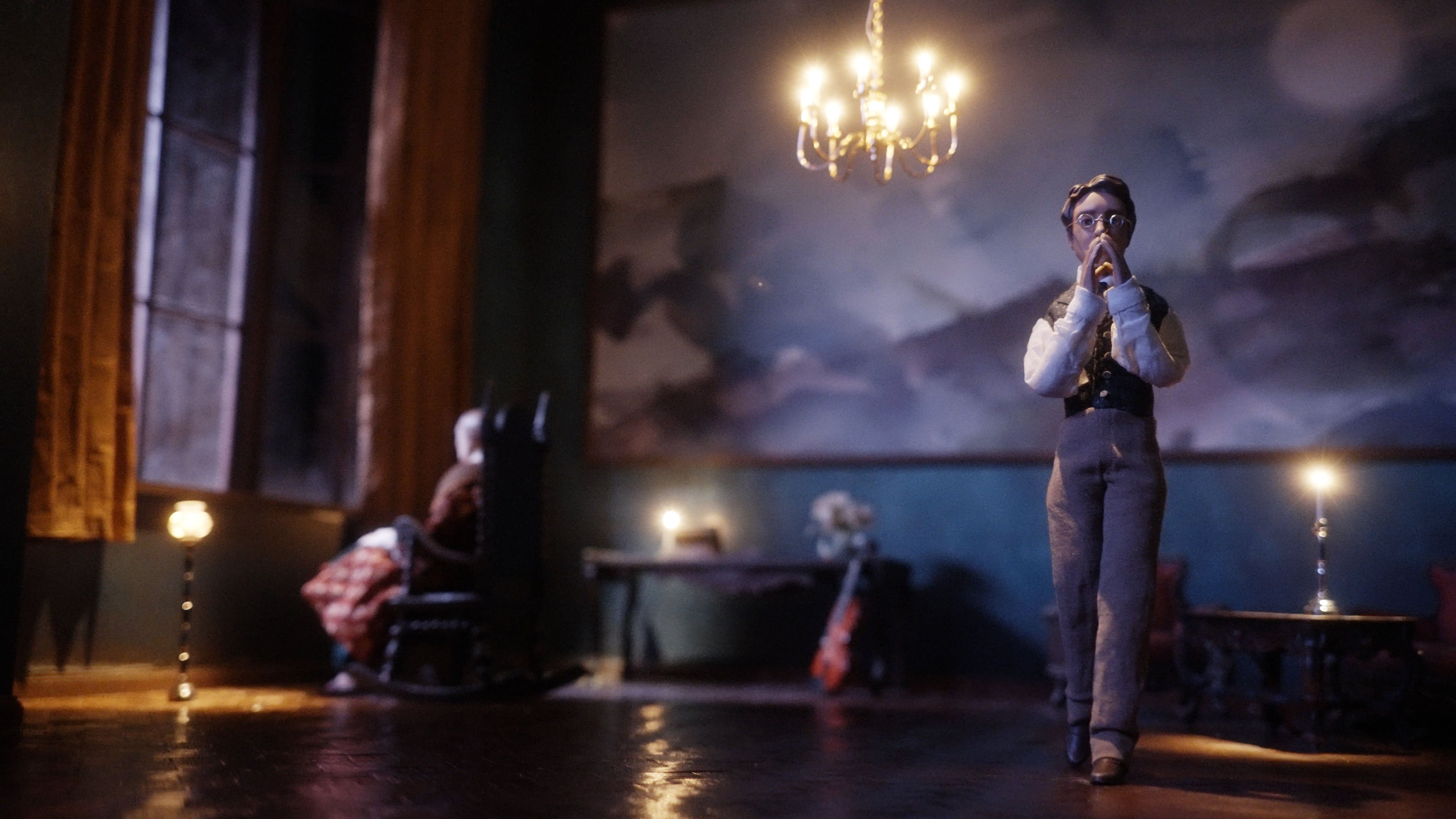
William worries for Roderick’s health in Fall of the House of Usher. PHOTO: operabox.tv: Boston Lyric Opera.
In the first of only two live-action segments, filmed in black and white, the camera pans out from a pair of men’s’ shoes, and a Twilight Zone-esque female narrator appears. “Good evening. Not what you expected? Well there’s nothing to be scared of just yet”. In just a few absurdly macabre images, our host brushes the hair of a blonde doll and later places surgical tools on a table, while quoting studies about the role of playing with dolls in the shaping of young girls. Deftly played by Sheila Vand, this character gives voice to another woman in an opera with four male characters and one female who is essentially mute with no sung dialogue. (Madeline Usher only ever sings on a vocalize.) The other female voice is that of the child Luna, whose story we see through what was meant to resemble child-like drawings. The conceit is that after being separated from her family while crossing the border, Luna is thrown into a room where she views the 1960 Vincent Price version of The Fall of the House of Usher, becomes obsessed with the storyline, and when she finds a mysterious dollhouse in an abandoned room, she acts out the story in which we find the opera ongoing. These images were particularly evocative when Luna the cartoon, looks through the stop-motion house of Usher.
Mid-century film reels interspersed throughout, harken back to the Price film adaptation of The Fall of the House of Usher as well as Grade B horror films of the 40s and 50s. Images of birthday parties, dances, Christmases at home, are later juxtaposed with real footage of ICE detention centers at the border, emphasizing that as Luna watches TV from the detention center, she is still looking from the outside in at the American dream. In media previews, screenwriter Santos points out that as a Spanish immigrant, he wanted to show a bit of a view of how the world sees the American dream from the outside in. And indeed, if there is anything to be scared of in this depiction, as our host warns, it’s our own complicity in the dismantling of America, supposed land of refuge for the weary. The idea of puppetry and a fictional world also brings forth the idea of manipulation of truth, storyline, and conspiracy in our current political landscape.
In the face of the creative challenges the pandemic has presented, BLO has done well to expand its skillset in this extraordinary way. The Fall of the House of Usher is available on operabox.tv until June 2021.
This post was written by the author in their personal capacity.The opinions expressed in this article are the author’s own and do not reflect the view of The Theatre Times, their staff or collaborators.
This post was written by Katrina Holden-Buckley.
The views expressed here belong to the author and do not necessarily reflect our views and opinions.

